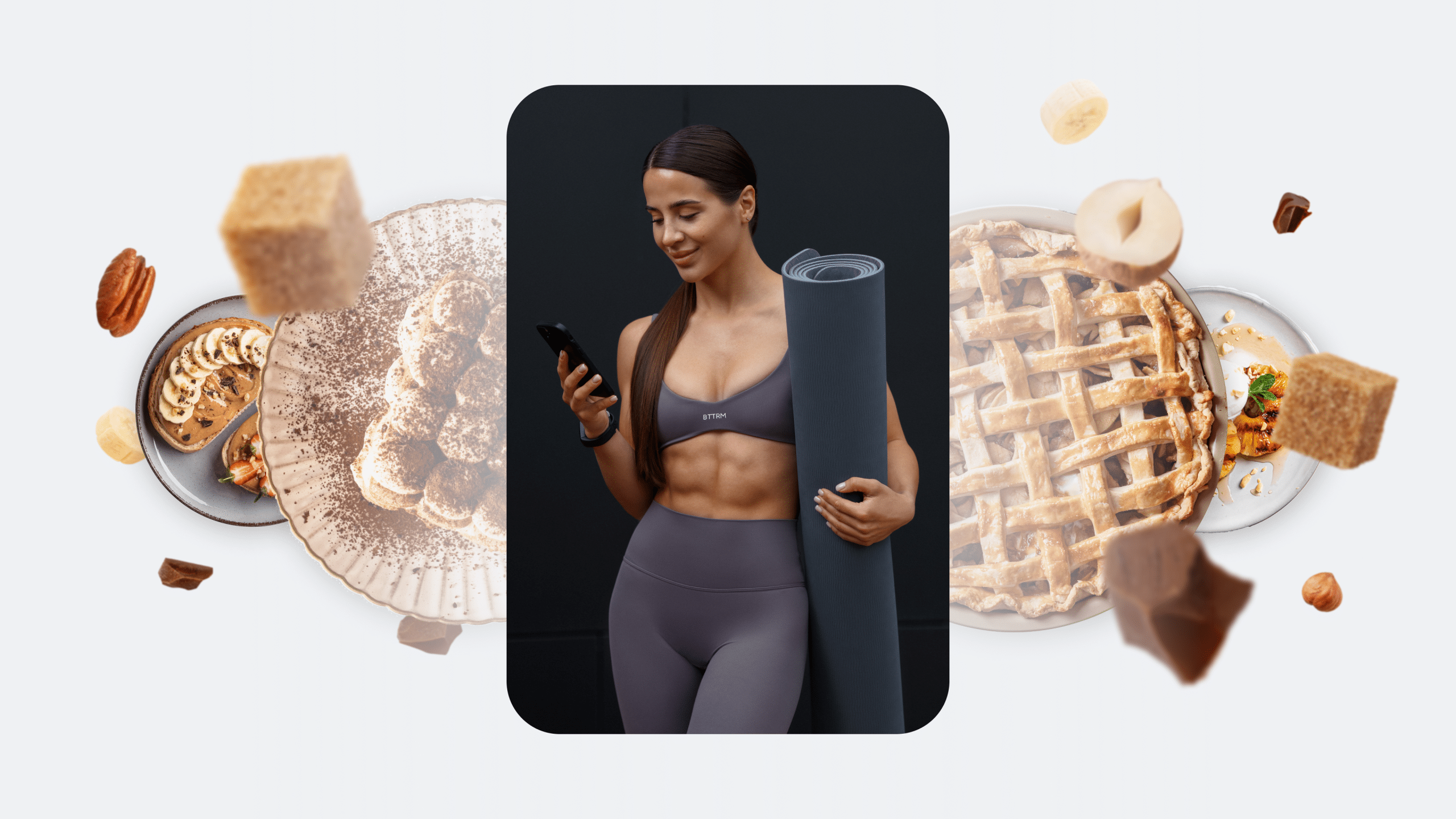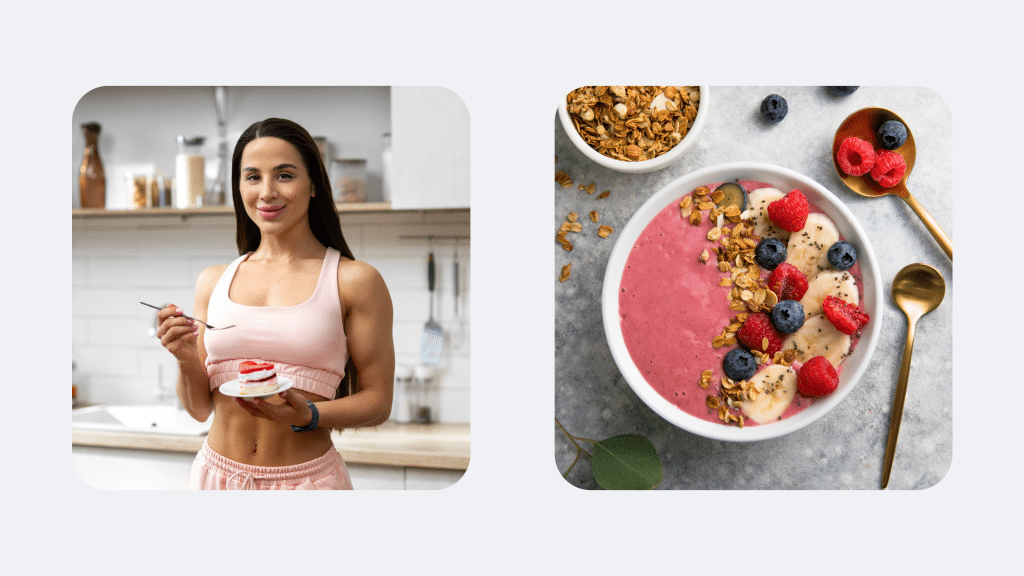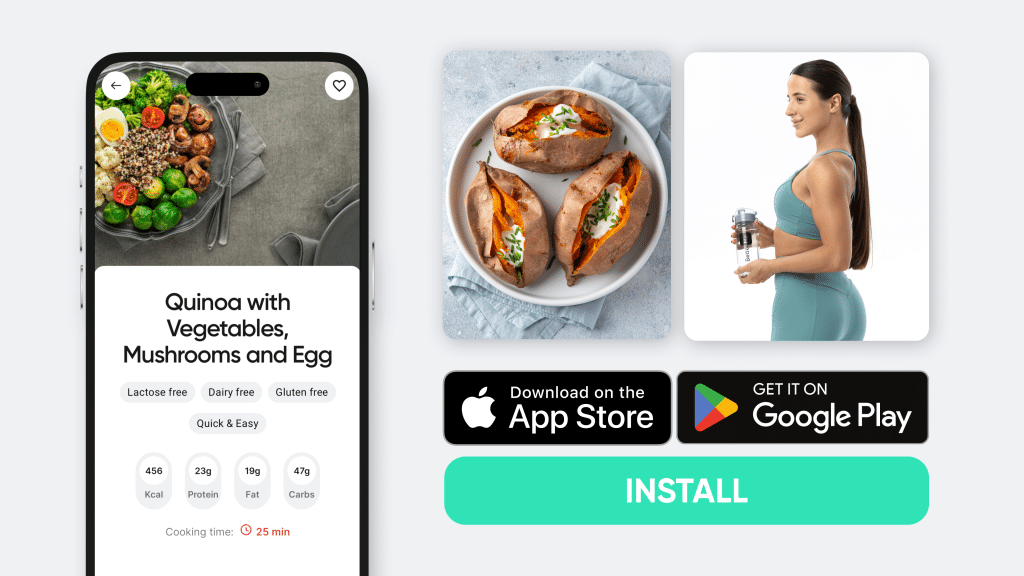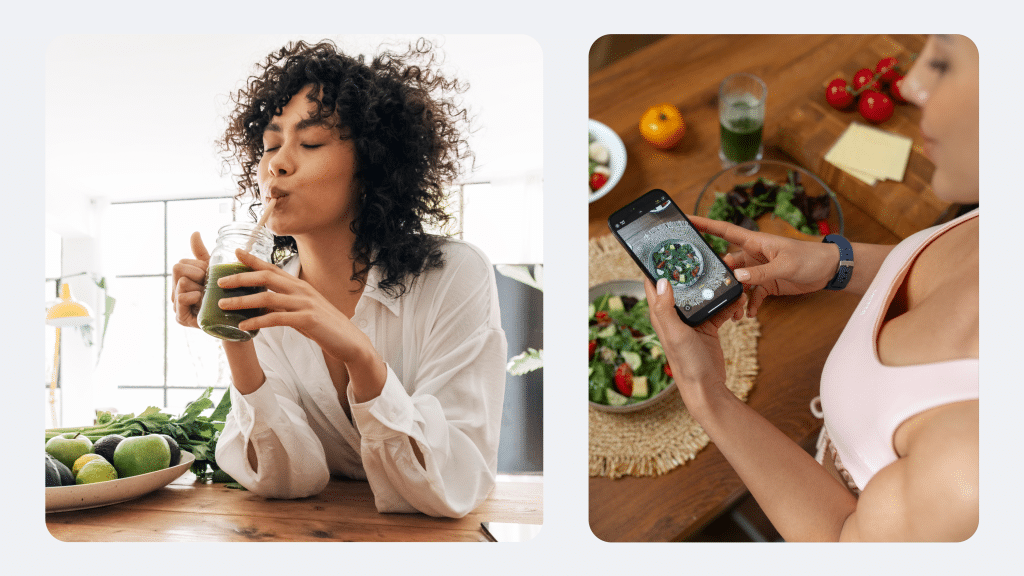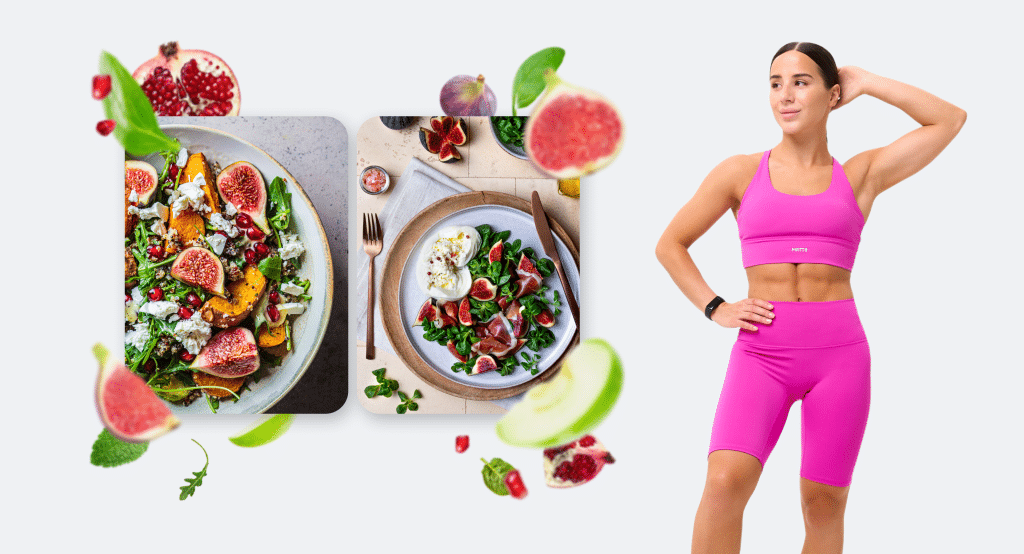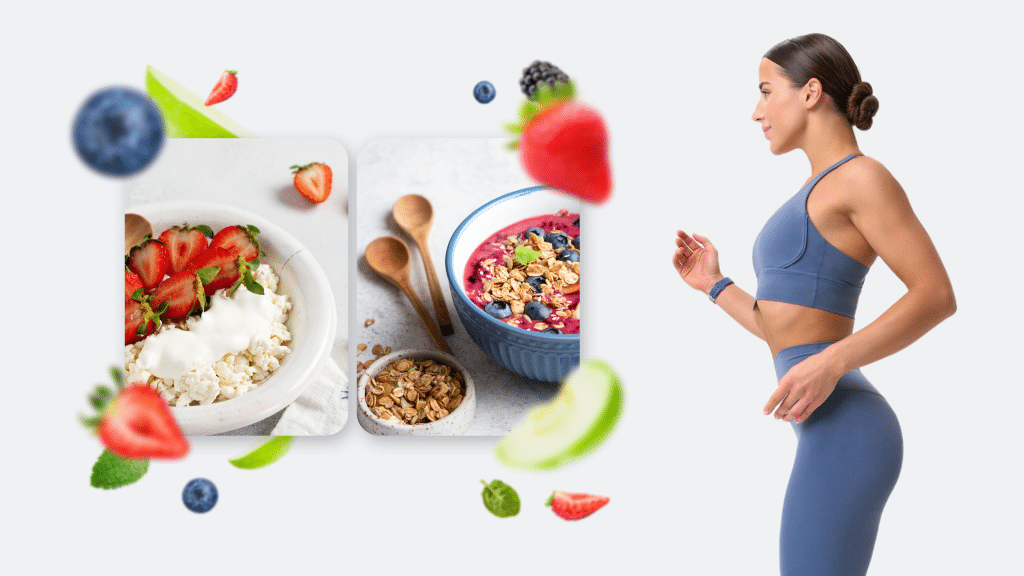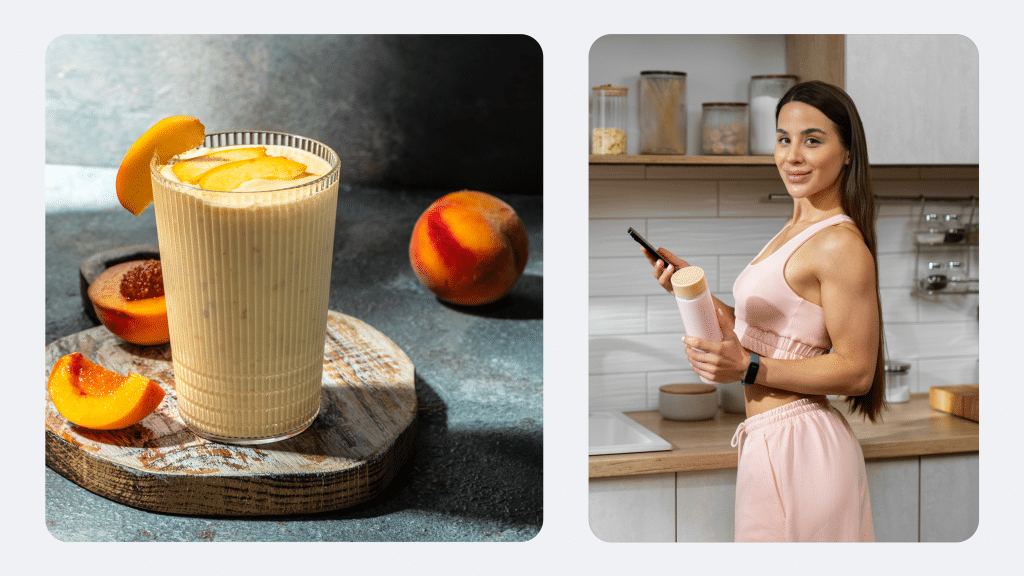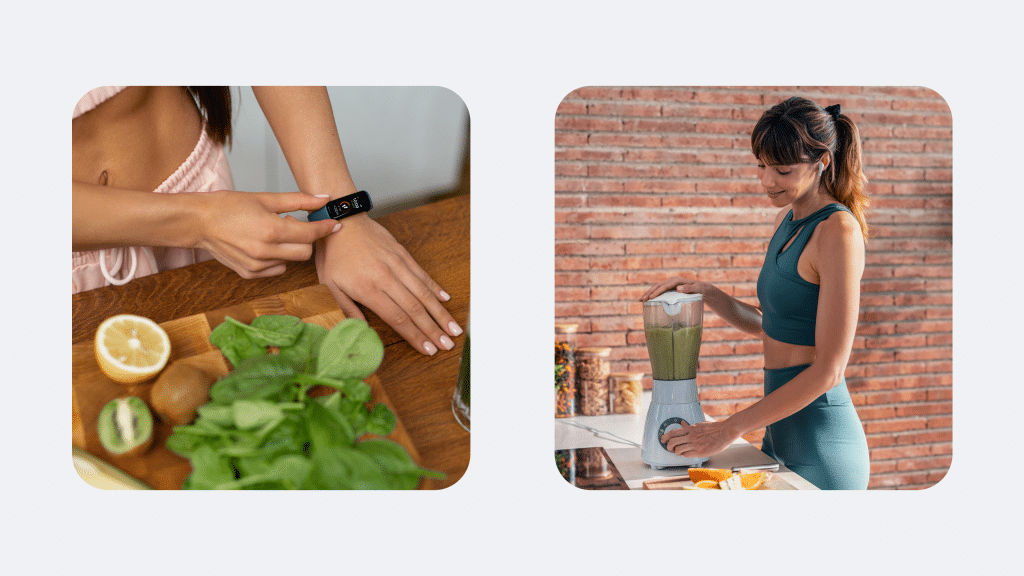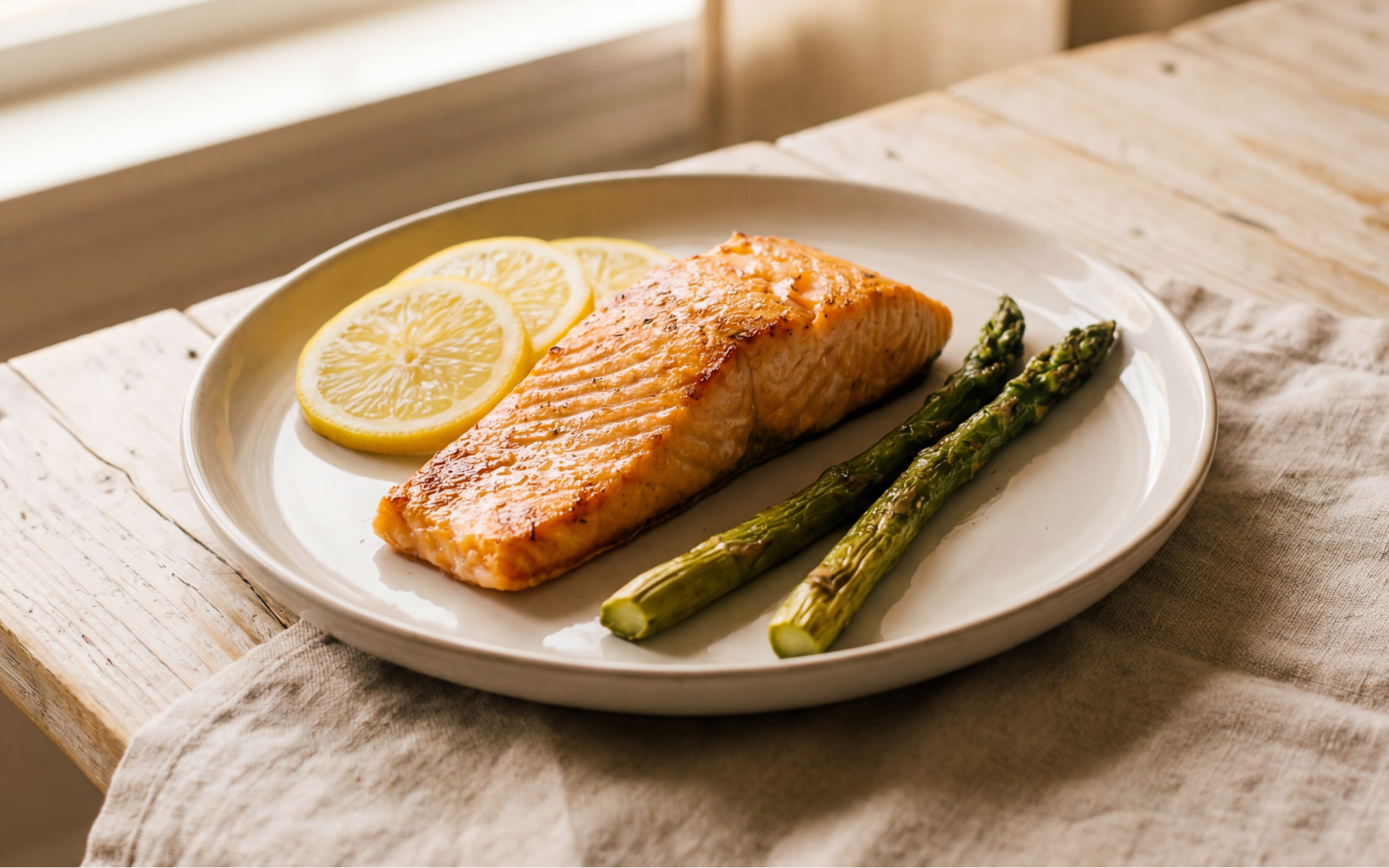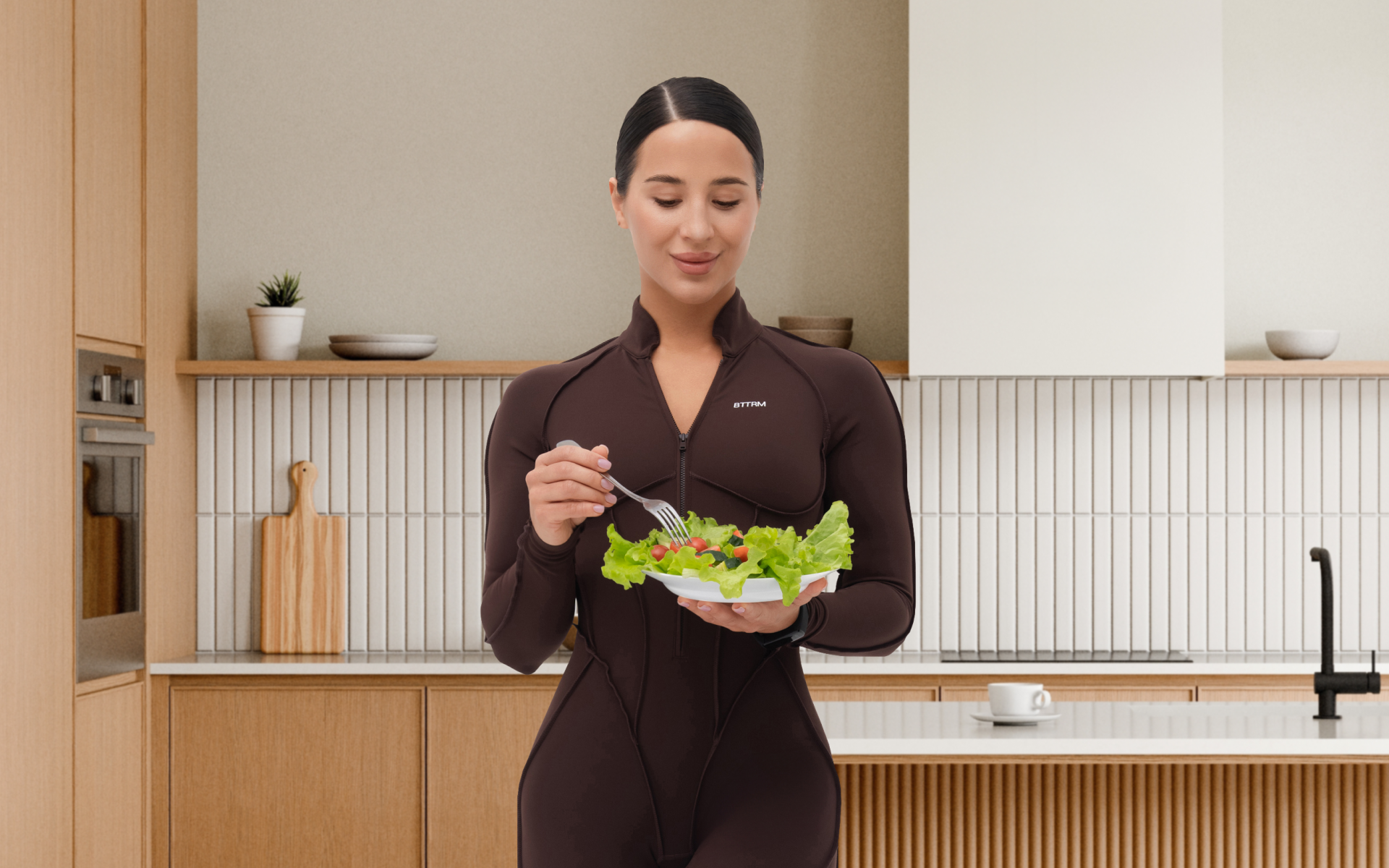Carbs and sugars. We all know just how bad a reputation these two foods have gotten recently. So maybe you want to try the no flour no sugar. You might want to lose weight for health reasons or personal inspiration, but you don’t know what this diet entails.
Contrary to public opinion, this diet doesn’t mean you won’t eat carbs. You can still eat most foodstuffs. Keep reading to find out the dos and don’ts of the no flour no sugar diet plan.
What Are No Flour No Sugar Diets?
The no sugar no flour diet has become quite popular recently, but where did it start? This weight loss program was first developed by Dr. Peter Gott, a medical practitioner, and health columnist. Dr. Gott believed that food with a lot of sugar and flour was why most Americans were unhealthy.
You can find these components in ultra-processed foods. Therefore, he argued that cutting down on them would lead to significant weight loss. So you can’t eat processed foods that have flour or sugar. What can you eat then? Next, we’ll look at what foods you can and can’t eat on diets with no flour or sugar.
Foods that are forbidden in this dietary plan include:
Refined Wheat and Other Flours
It’s necessary to cut off your refined grain consumption on this diet. This means you won’t be able to eat foods such as bread, pasta, or baked goods. You can still eat whole grains, but if you’re on this diet due to a gluten sensitivity, you’ll need to avoid wheat, barley, and rye in any form. You’ll also get carbohydrates from starchy vegetables and legumes.
Added Sugars
Added sugars are added to foods to enhance taste and flavor. These sugars typically add calories but offer little nutritional value. If your no flour no sugar diet is to work, you need to stay away from added sugars. However, this doesn’t apply to naturally occuring sugars in fruits, vegetables, and dairy products. You don’t need to worry about those.
Soft Drinks and Sodas
You consume a lot of “empty” non-nutritional calories when you drink a lot of soft drinks. When you’re on a sugar-free diet, water and non-sugary options must remain your drinks of choice.
With all these dietary restrictions, you may be asking whether this diet plan is ultimately safe for your health. Next, we look at the health impacts this type of diet will have on your body in the long term.
Read more: Intermittent Fasting Drinks: What to Drink Without Breaking A Fast
Are No Flour No Sugar Diets Safe?
There has been a steady rise in the number of studies that suggest the negative implications of added sugars. This has made the WHO revise their added sugars recommendations from 10% of total energy intake to 5%. This revision aims to reduce the risk of noncommunicable diseases in adults and children (2).
In addition, many nutritionists and health experts are increasingly supporting the recommendation to reduce added sugars in the diet. But just how practical is this to achieve? We take sugars in many foods we eat during the day, both knowingly and unknowingly. The no flour no sugar diet essentially aims to eliminate added sugars, not natural sugars.
The American Heart Association (AHA) argues that our bodies don’t need added sugars to function correctly. They suggest that added sugars contribute additional calories and zero nutrients to food (3). However, AHA stresses that removing added sugars from your diet is not similar to no sugar intake. The latter may be harmful to our bodies as sugar is the body’s preferred source of fuel (3).
So this diet can be done safely as it won’t deprive your body of the much-needed natural sugars or other sources of complex carbohydrates such as whole grains and starchy vegetables. However, it will remove the unnecessary and possibly harmful added sugars. So are no flour no sugar diets safe? They can be if planned properly.
In his book, “No Flour, No Sugar Diet”, Dr. Gott explains how cutting down on flour-based, sugar-added foods reduces your calorie intake. Reduced calorie and sugar intake may then create numerous health benefits, including:
Weight Loss
Even just reducing your intake of refined carbohydrates and added sugars is likely to reduce your overall calorie intake. Reduced calorie intake can help create an energy deficit, which is the most important factor that influences weight loss.
Younger-Looking Skin
Studies have suggested that high sugar levels in your blood promote a molecular reaction called glycation. When glycation occurs, changes can happen to the collagen and elastin that support your skin’s structure. This means that your skin may not look as good as it’s supposed to when you take lots of sugar (5).
Changes in collagen and elastin can lead to premature wrinkles and a loss of skin elasticity (5). Therefore, cutting down on your sugar intake becomes a brilliant way to reduce sagging and visible signs of aging.
Lasting Energy Levels
Most sugars are just simple carbohydrates. Essentially, this means that they’re absorbed into your bloodstream quickly and give you an energy rush. We all know the familiar rush of sudden power and energy; that’s what sugars do.
However, once all that sugar is metabolized, you may crash hard. When you eat meals balanced with complex carbs, healthy fats, and proteins instead, you get a steadier supply of energy. This supply will also last longer, keeping you energized throughout the day (6).
Less Abdominal Fat
We all know that the “daily sugary soda habit” can contribute to belly fat. What most people don’t know are the potential health risks that come with abdominal fat. These visceral fats are the riskiest as they influence the production of adipokines and cytokines.. This can increase inflammation in your organs and blood vessels, which can lead to an increased risk of type 2 diabetes and heart diseases (7).
Simply put, cutting down on sugary desserts and sodas can help you lose fat, including belly fat, and reduce the adverse health effects that are associated with it.
Our previous post goes into great detail about the healthy alternatives to soda.
Keeping Your Cardiovascular System Strong and Healthy
A healthy heart powers you through all your activities, from your intense workout routines to your late-night work deadlines. However, keeping it fueled with caramel lattes and cookies won’t do your heart any good in the long run. A study from 2014 supports this notion (9).
The study’s result was as follows: People getting 17% to 21% of their daily calories from added sugars had a 38% higher chance of dying from heart disease than those who kept their added sugar intake at 8% of their daily calorie consumption (9).
Looking at all these potential health benefits, perhaps you want to get in on the diet. However, you’ve never been on any dietary plans before, so you’re wondering how to start a no added sugar diet and see it through. Read the following section to find out how to go about this.
Read more: Healthy Mediterranean Recipes: The Foods You Can Try on Your Diet
How to Start a No Added Sugar Diet
The no flour no sugar diet can be confusing, especially when it comes to the foods you can and can’t eat. Here are some tips that will get you started on this diet.
1. Choose the Right Foods
The most crucial part of starting and seeing through a no flour no sugar diet is knowing what to eat. These are some of the foodstuffs that should be on your grocery list if you’re to get the full benefits of this dietary plan.
Fruit and Vegetable Produce
Fruits and particular vegetables contain natural sugars that are safe and healthy. These sugars don’t need to be minimized the way added sugars do. According to health scientists at the University of California, foods with natural sugars provide essential nutrients such as vitamins, minerals, and fiber for your body, and eating fruits and vegetables helps protect against heart disease (10).
Ultimately, they’ll provide you with lasting energy reserves and fuel your brain, keeping you active all day.
When you get into this diet, you can opt to stick with fruits that have the least amounts of natural sugars, but all fruits are allowed. These fruits include avocados, lemons, lime, rhubarb, grapefruits, papayas, nectarines, peaches, oranges, guavas, clementines, pineapples, and plums. You can also consume berries such as cranberries, strawberries, and blueberries. According to data from the USDA, these fruits have less than 10 grams of natural sugar per 100-gram serving (11).
Vegetables are generally lower in natural sugars than fruits, and you can eat any of them you like. Vegetables with the lowest levels of natural sugars include spinach, yams, cauliflower, cabbage, asparagus, kale, Swiss chard, broccoli, okra, cucumber, mushrooms, summer and winter squash, watercress, and endive. Nutritional data from the USDA shows that these vegetables have less than 2 grams of natural sugars per 100-gram serving (12).
Lean Protein
Plain and raw animal protein contains no sugar or flour. Sugar and flour come in if the product has been breaded or prepared with sauce. Keeping this in mind, you should avoid certain frozen or prepared animal products. These include breaded fish sticks, chicken nuggets, and prepared meat such as flavored sausages and crab cakes.
Alternatively, you can opt for fresh or frozen unprepared chicken, fish, turkey, pork, beef, lamb, and seafood. Buy these products raw and cook them at home using fresh herbs, lemon, and olive oil, or whatever flavorings you like. Just don’t use bottled products such as ketchup or dressings that contain added sugars.
Eggs are also an excellent source of lean protein and they don’t have any natural sugars or flour. However, steer clear from dishes such as quiche that have a flour crust. You can also use dairy products such as plain milk and yogurt. Avoid the flavored variants that contain additives such as sugar or honey, which are meant to improve its taste.
The BetterMe: Health Coaching app will provide you with a host of fat-frying fitness routines that’ll scare the extra pounds away and turn your body into a masterpiece! Get your life moving in the right direction with BetterMe!
Beans and Legumes
These products have complex carbs and protein, but they don’t have any flour or added sugar.
Canned and plain dried beans and legumes of all kinds are an excellent source of protein. These include navy, white, kidney, pink, pinto, and black beans. Just read the labels of your canned beans as some flavored varieties (such as baked beans) may contain added sugar.
You can also use soy-based foods such as soy milk and tofu. However, you should steer clear of any sweetened or flavored milk alternatives, as they likely contain added sugars.
Nuts and Seeds
These two foods are excellent snacks as they’ll give you both protein and fiber, improving your satiety. They also reduce the risk of dying from heart disease and diabetes, according to Harvard Health (14).
The USDA states that most nuts have less than 10 grams of natural sugars per 100-gram serving, with no flour content. Brazil, pecan, almonds, macadamia, pistachios, and hazelnuts contain the lowest amounts of sugars when it comes to nuts. Data from the USDA show their nutritional profiles to have less than 5 grams of natural sugar per 100-gram serving (13). However, you can eat any nuts and seeds you like, as you don’t need to limit natural sugars on this diet, only added sugars.
Opt for raw or dry-roasted varieties, and avoid any sweet-flavored varieties with added sugar.
Whole Grains
On this diet, you’ll need to avoid anything made with flour, including pasta, bread, or cereals, and instead choose whole grains. Most of them don’t have gluten and have very low levels of sugar. Some examples of gluten-free whole grains include brown rice, quinoa, wild rice, oats, amaranth, buckwheat, and sorghum. If you don’t need to avoid gluten, you can have farro, bulgar, and other whole-grain wheat products, in addition to hulled barley.
2. Read Labels
When you’re on the no flour no sugar diet, you should read and understand what’s on the labels of food products. Sugar and wheat can be processed in different forms and, as such, may be indicated differently on labels.
Some of the added sugar or flour names and ingredients to look out for and avoid when you go grocery shopping include:
- Molasses
- Malt sugar
- Cereal extract
- Flour
- Cracker meal
- Vital wheat gluten
- Modified starch
- Gelatinized starch
- Wheat bran hydrolysate
- Vegetable starch
- Corn sugar/syrup
- Brown sugar
- Glucose
- Fructose
- Raw sugar
- Sucrose
- Turbinado sugar
- Honey (honey occurs naturally but can be considered an added sugar – this is because it contains similar levels of sugar to granulated sugar and high-fructose corn syrup)
- Fruit juice concentrate
- Invert sugar
3. Address Your Cravings
Cravings can become a serious issue when you’re on a no sugar no flour diet. If you’re not careful, you may end up going off the whole dietary plan due to cravings. Dr. Gott gives some tips in his book on how you can tackle your cravings in the middle of this diet. Try:
Using a Diet-Friendly Substitute
In his book, Dr. Gott lists a lot of healthy substitutes for your favorite foods. They include:
- Loaves made from sprouted wheat berries instead of conventional bread
- Tomato sauce-topped polenta instead of pasta
- Use rice, potatoes, and beans for your carb intake instead of flour
So any time you feel like going back to your old diet, look for a healthier substitute.
Eat Fresh Fruits If You’re in Need of Something Sweet
If you can’t stop thinking about sweet foods, try taking fruits. You don’t need to avoid the naturally occurring sugars in fruits and other nutritious foods. The sweet taste of a piece of fruit or bowl of berries may be enough to satisfy your cravings.
Do this and you’ll find yourself sailing through the diet with zero hassle. You won’t even crave sugar anymore.
What Is the Best No Sugar Diet Plan For Beginners?
This meal plan can be quite confusing, particularly for beginners. Most times, you’re not sure which low-sugar foods best suit your needs or whether you’re doing everything right. The No Flour, No Sugar Diet by Dr. Gutts contains many meal plans you can use for your diet. Here are some of them:
Meal Plan 1
- Start your day by eating scrambled eggs with sliced lean ham, reduced-fat cheese, and a sliced apple for breakfast.
- Your mid-morning snack should include a single celery stalk filled with no added sugar nut butter.
- For lunch, have some taco salad with spiced prawns.
- Take some spiced edamame for your afternoon snack.
- Eat curry yogurt chicken, steamed or sauteed zucchini, and steamed brown rice.
Meal Plan 2
- Have some omelet muffins and sliced fresh strawberries for breakfast.
- Eat diced cantaloupe for your mid-morning snack.
- Have a Greek salad for lunch.
- In the afternoon, drink some no-sugar-added yogurt.
- Eat chicken breasts in rosemary-Dijon sauce, steamed brown rice, and spinach salad with tomato vinaigrette.
Meal Plan 3
- Start your day with some nonfat milk, fresh peach, and oatmeal.
- Take diced pineapple for your mid-morning snack.
- Eat a green salad with water-packed tuna for lunch, with sliced tomato, shredded carrot, and no-sugar-added vinaigrette.
- Eat some spiced edamame in the afternoon.
- For dinner, take meatballs in tomato sauce and polenta with fresh corn.
If you’re looking for a good sugar detox diet, try the above meal plans. If they don’t work for you, there are lots of other plans you could try. Check out Dr. Gutt’s No Flour No Sugar Diet to explore more of these plans.
If you’re curious about the no sugar diet food list, check out our earlier article
BetterMe: Health Coaching app helps you achieve your body goals with ease and efficiency by helping to choose proper meal plans and effective workouts. Start using our app and you will see good results in a short time.
Simply eliminating sugar and flour without making other healthy changes may not bring about long-term results. When you eliminate sugar and flour from your diet, you’re likely to see a reduction in calorie intake, which can contribute to weight loss. Without these excess sources of energy, your body will turn to stored fat for fuel, potentially leading to a slimmer waistline. Furthermore, cutting out these ingredients can help stabilize blood sugar levels, reducing hunger and cravings. Stable blood sugar means fewer energy crashes throughout the day, which often leads to reaching for unhealthy snacks. That being said, there are a few reasons why simply cutting out sugar and flour may not bring about long-term weight loss: To truly see sustainable weight loss, it’s important to take a holistic approach that includes a balanced diet, regular exercise, and healthy lifestyle choices. Cutting out sugar and flour can be a helpful step in this process, but it shouldn’t be the sole focus. Eliminating flour from your diet can be a helpful strategy for weight loss. Refined flour is often found in processed and refined foods, such as bread, pasta, pastries, and snacks. These types of foods are typically high in calories and may be low in nutritional value, which makes them easy to over-consume. By removing flour from your diet, you may see a reduction in calorie intake and an improvement in overall nutrition. In addition, eliminating flour can help stabilize blood sugar levels and may reduce cravings for unhealthy foods. Keep in mind that simply cutting out flour without making other healthy changes may not lead to long-term weight loss. This dietary change must be accompanied by a larger weight loss plan that includes regular physical activity and a balanced, calorie-controlled diet. There are plenty of nutritious foods that don’t contain flour or added sugar, including: After 30 days without consuming added sugars, you may see a range of benefits (21), including: Eliminating added sugars may be challenging at first, but the long-term benefits are worth it. Pairing this dietary change with a balanced, nutritious diet and regular exercise can help you achieve sustainable weight loss and improve overall health.FAQs
Will I lose weight if I stop eating sugar and flour?
Can you lose weight by not eating flour?
What foods have no flour or sugar?
What happens after 30 days of no sugar?
The Bottom Line
The no flour no sugar diet is a weight loss plan that is designed to reduce calorie intake by eliminating added sugars and flour-based products from the diet. It encourages eating fruits, vegetables, whole grains, legumes, seeds, nuts, fish, poultry, lean meats, and other nutritious whole foods.
As with any diet, this one may work for some people, but it isn’t for everyone. Talk to your healthcare provider to get individualized advice. In addition to diet, it’s important to increase physical activity, hydrate with sugar-free beverages, and get enough sleep to lose weight.
DISCLAIMER:
This article is intended for general informational purposes only and does not serve to address individual circumstances. It is not a substitute for professional advice or help and should not be relied on for making any kind of decision-making. Any action taken as a direct or indirect result of the information in this article is entirely at your own risk and is your sole responsibility.
BetterMe, its content staff, and its medical advisors accept no responsibility for inaccuracies, errors, misstatements, inconsistencies, or omissions and specifically disclaim any liability, loss or risk, personal, professional or otherwise, which may be incurred as a consequence, directly or indirectly, of the use and/or application of any content.
You should always seek the advice of your physician or other qualified health provider with any questions you may have regarding a medical condition or your specific situation. Never disregard professional medical advice or delay seeking it because of BetterMe content. If you suspect or think you may have a medical emergency, call your doctor.
SOURCES:
- Diet and Dermatology (2014, nih.gov)
- Whole grain consumption and risk of cardiovascular disease, cancer, and all cause and cause specific mortality: systematic review and dose-response meta-analysis of prospective studies (2016, nih.gov)
- Reducing free sugars intake in adults to reduce the risk of noncommunicable diseases (2023, harvard.du)
- Added Sugars (2024, heart.org)
- Factors Affecting Weight & Health (2023, nih.gov)
- A healthy approach to dietary fats: understanding the science and taking action to reduce consumer confusion (2017, nih.gov)
- Effect of Dietary Sugar Intake on Biomarkers of Subclinical Inflammation: A Systematic Review and Meta-Analysis of Intervention Studies (2018, nih.gov)
- Carbohydrates and Blood Sugar (n.d., harvard.edu)
- The sweet danger of sugar (2022, harvard.edu)
- Frequently Asked Questions (n.d., sugarscience.ucsf.edu)
- Fruits Lowest in Sugars (n.d., tools.myfooddata.com)
- Vegetables Lowest in Sugars (n.d., tools.myfooddata.com)
- Beans and Lentils Lowest in Sugars (n.d., tools.myfooddata.com)
- Why nutritionists are crazy about nuts (2017, harvard.edu)
- Physical Activity and Your Weight and Health (2023, cdc.gov)
- Tips for Healthy Eating for a Healthy Weight (2023, cdc.gov)
- Health Benefits of Fruits and Vegetables1 (2012, nih.gov)
- Protein supplementation: the double-edged sword (2024, nih.gov)
- Nutrition Benefits and Considerations for Whole Foods Plant-Based Eating Patterns (2022, nih.gov)
- Eating healthy fats has many benefits (2022, uclahealth.org)
- The Impact of Free Sugar on Human Health—A Narrative Review (2023, nih.gov)
